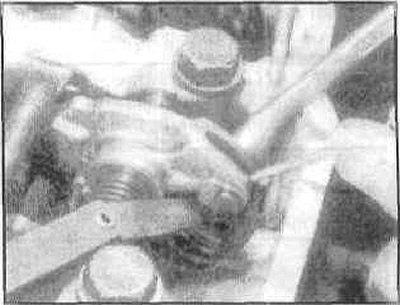If the valve clearance is too large, then part of the stroke of the pusher and camshaft will be spent on compensating for excess clearance, i.e. valves are not open long enough. In this case, two effects appear - the parts of the valve drive mechanism will make a knocking sound, since there is an extra gap, and the engine will work poorly, because. the intake valve will not open enough and less mixture will enter the cylinder. Insufficient opening of the exhaust valve will result in excessive exhaust gas pressure in the cylinder, which prevents the required amount of working mixture from entering the cylinder.
If the valve clearance is too small, then the intake and exhaust valves do not sit tightly on the cylinder head when they are closed. When the valve sits on the cylinder head, it performs two functions - it closes the combustion chamber so that no gases can escape from the cylinder, and it cools itself by absorbing some of the heat from the combustion process by the cylinder head and engine cooling system. Thus, if the valve clearance is too small, the engine will not run well (due to the fact that gases exit the combustion chamber), the valve will overheat and deform (because it cannot transfer heat until it touches the valve seat in the cylinder head).
Caution: While all valve adjustments must be made with the utmost care, it is better to have looser adjustment than more «squeezed», since burnt valves can be the result of more «clamped» adjustments.
Warm up the engine to normal operating temperature before checking or adjusting valve clearances.
Remove the cylinder head cover.
Set the piston of the first cylinder to the DVN position of the compression stroke
Check the valve clearances of the first cylinder. The hot valve clearances are:
- intake valves - 0.35 mm;
- exhaust valves - 0.4mm.
Insert a feeler gauge between the valve stem and rocker arm. If the probe enters between them with little effort, then the gap is correct and adjustment is not needed.
If the clearance is greater or less than specified, loosen the locknut. Insert a wrench made from a large diameter metal wire and rotate the eccentric until the gap is the desired size.

If the gap is set, tighten the eccentric and locknut. Recheck the clearance.
After adjusting the valves of the first cylinder, turn the crankshaft 120°, then check and adjust the valves of the fifth cylinder.
Repeat the adjustment procedure on the remaining cylinders (1-5-3-6-2-4).
Install the cylinder head cover.
